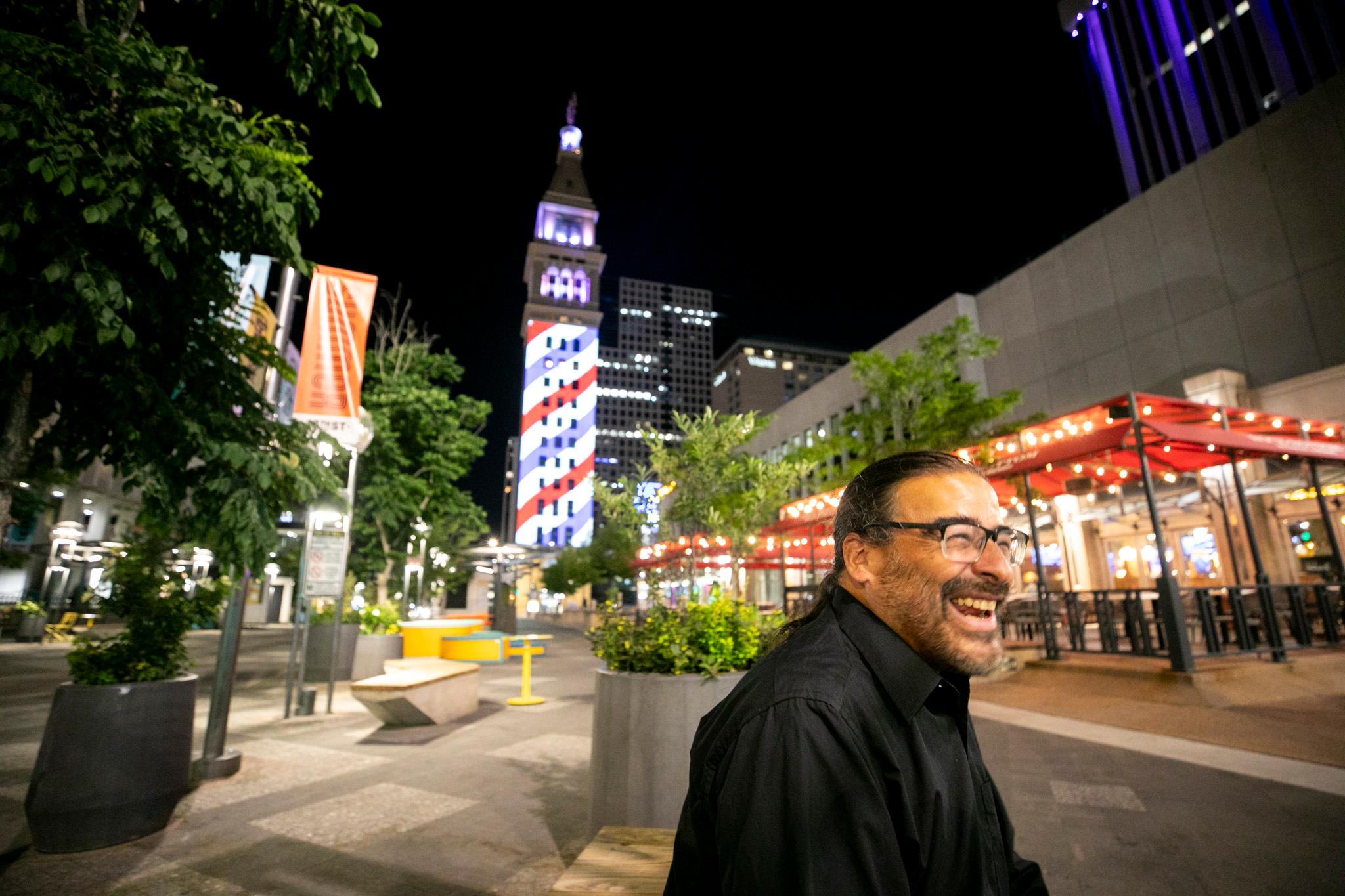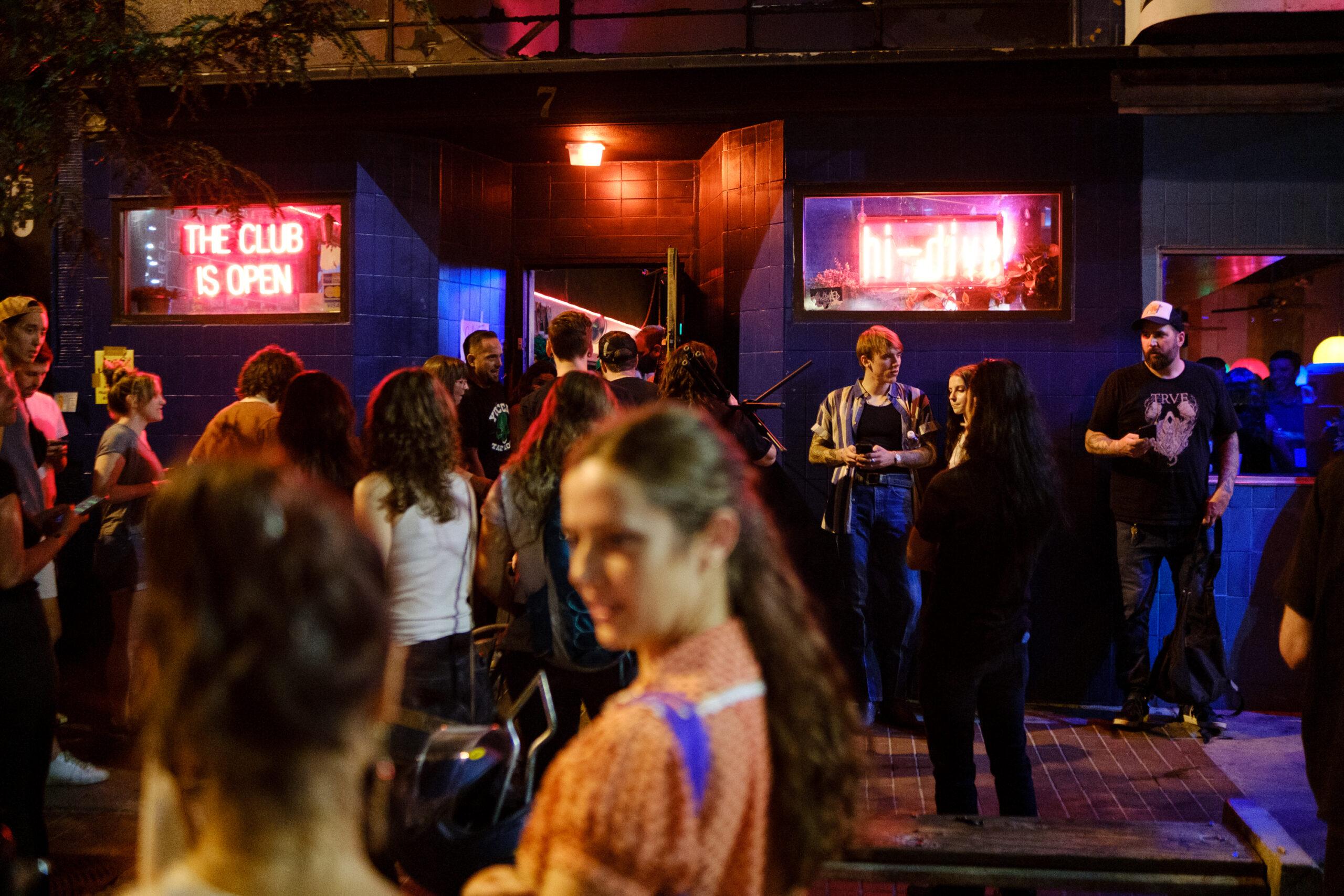
Theodore Oyler has gone to extremes to keep his five Denver properties in historic condition, from hardwood floors to clawfoot tubs. This month, however, he discovered that neither he nor his lawyer could stop the rapid spread of a new technology through Denver's oldest neighborhoods.
On Oct. 12, Oyler noticed a crew drilling horizontally near the sidewalk outside his Dalton Apartments building in Cheesman Park.
"It was just a fluke that we even saw it," he explained. When he talked to a worker, he learned that they were building a miniature cell tower -- 30 feet tall and skinny enough to fit between the sidewalk and the street.
They were installing one of hundreds of "cell poles" or "small cell" sites expected to be installed in central Denver this year by up to ten different companies.
"This is going to affect every neighborhood," Councilman Wayne New told Denverite. "This is not just Cheesman Park or Capitol Hill. This is going to be all across the city."

Why this is happening:
Earlier this year, a new state law said that companies generally should be allowed to plant these new cell poles in the public right of way. Verizon alone has installed or won permits for more than 150 this year, according to city records, "and they have the right to do it without any objections," New said.
The new sites are much smaller than a full tower -- about the size of a streetlight -- and they cover just a couple blocks each. They're expected to unclog data connections and could be a key element in the next-generation 5G data networks.
"The demand for wireless is growing so much on its own, it’s almost everything that wireless companies can do just to keep up with it," said John Rowe, a local expert on cell technology who just published the book "Firmly Anchored in Midair: The Handbook of Wireless Site Acquisition and Permitting."
Small cell sites have been around for close to 20 years, he said, but they've become much more popular as providers have tried to serve more and more data to dense, urban areas where they can't build big towers. Cell poles usually are connected to fiber networks.
If current trends continue, the United States could have ten times more cell transmission sites within five years, he estimated. Installations of small cell sites already have increased from 69,000 in 2015 to an estimated 270,000 this year in North America, according to the Small Cell Forum industry group.
In Denver, three different companies have thirteen different proposals in progress as of today.
Why people are unhappy:
Property owners like Oyler say they aren't being notified before construction, and they describe the new poles as an eyesore.
"Here’s your front lawn, here's your sidewalk, and now you’re looking at a 30-foot pole," he said. "If you have a second-floor window, you’re looking right out into the head of this transmitter."
Once he found out, the landlord tried to raise the issue with Verizon, but he got no response. The next day, Oct. 13, he filed a lawsuit, but a judge threw it out this week.
The deeper worry is that companies won't work together to minimize the number of new poles. With multiple networks competing for market share, New worries that they'll saturate the streets.
"I'm not talking about just Verizon. There’s maybe 10 of them. You put 10 poles in a block in front of people’s houses -- it’s just a forest of unnecessary poles," New said.
The 10 companies working in Denver include telecoms like Verizon as well as companies that build towers for other companies to use.
What the city could do:
Councilman New wants to see the cell companies mount their antennae on existing poles rather than building hundreds of new ones.
The challenge is that Denver does not own most of its utility poles, light poles or even its traffic signal poles –– Xcel and other utilities do. Denver officials already have convinced Xcel to offer up some of its poles for "co-location," but the cell companies aren't exactly rushing to use them, New said.
"With Verizon, we met with them and a couple of the representatives were just totally uncooperative," he said. "It was unbelievable. It was like they didn’t care whether there were multiple poles or not."
In an emailed statement, Verizon spokesperson Meagan Dorsch said the company is committed to following all local processes around small cell deployment" but notes that due to differences in carrier needs and equipment, "co-location is not always an option."
Xcel, meanwhile, says it already makes space available and is working on agreements to expand that practice with more companies.
"Additionally, it is a top priority for us to ensure there are no impacts on our ability to provide safe and reliable service to our customers. We will be coordinating closely with interested cities and cellular providers regarding implementation once an agreement is finalized," spokesperson Michelle Aguayo wrote in an email.
Now, Councilman New is considering introducing an ordinance that would require companies to do everything possible to minimize the number of new poles. The new state law does allow cities to regulate on the basis of public health, safety and welfare -- which can include aesthetics, Rowe said.
"You can’t say, 'Well, I don’t like it, so I don’t want it,'" he said. "But that doesn’t mean you can’t put reasonable stipulations on it."
Whatever happens, though, will likely be too late for Theodore Oyler and his fight against Denver's newest cell pole.
"Pretty much we’re out of luck," he said. "They're going full speed ahead."
Is there a small cell going up in your neighborhood? Email me. For more details and contact information, you might refer to the city's informational guide.
Cell poles in progress as of Oct. 31:
The following addresses were the sites of currently proposed cell poles.
Mobilitie
- 2635 W. 13th Ave.
- 2732 W. Colfax Ave.
AT&T
- 1465 Wewatta St
Verizon
- 1690 N. Perry St.
- 3710 W. 17th Ave.
- 3389 W. 17th Ave.
- 4929 S. Syracuse St.
- 7772 E. Union Ave.
- 845 Yosemite St.
- 3008 W. 14th Ave.
- 3010 W. 12th Ave.
- 3001 W. 9th Ave.
- 3013 W. 8th Ave.
- 1312 N. Decatur St.
- 3207 W. Colfax Ave.
- 1496 N. Knox Ct.
- 1509 N. Meade St.
- 1490 N. Stuart St.
- 4613 W. Colfax Ave.
- 1649 W. 36th Ave.
- 1561 W. 35th Ave.
- 3402 N. Pecos St.
- 3190 N. Umatilla St.
- 3580 W. 6th Ave.
- 602 N. Perry St.
- 4499 W. 6th Ave.
- 597 N. Wolff St.
- 543 N. Stuart St.
This post was updated with revised information from city records and with comment from Xcel.










